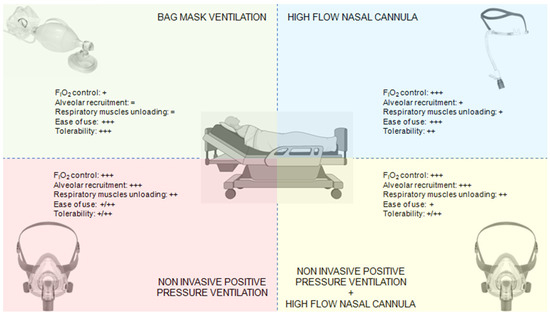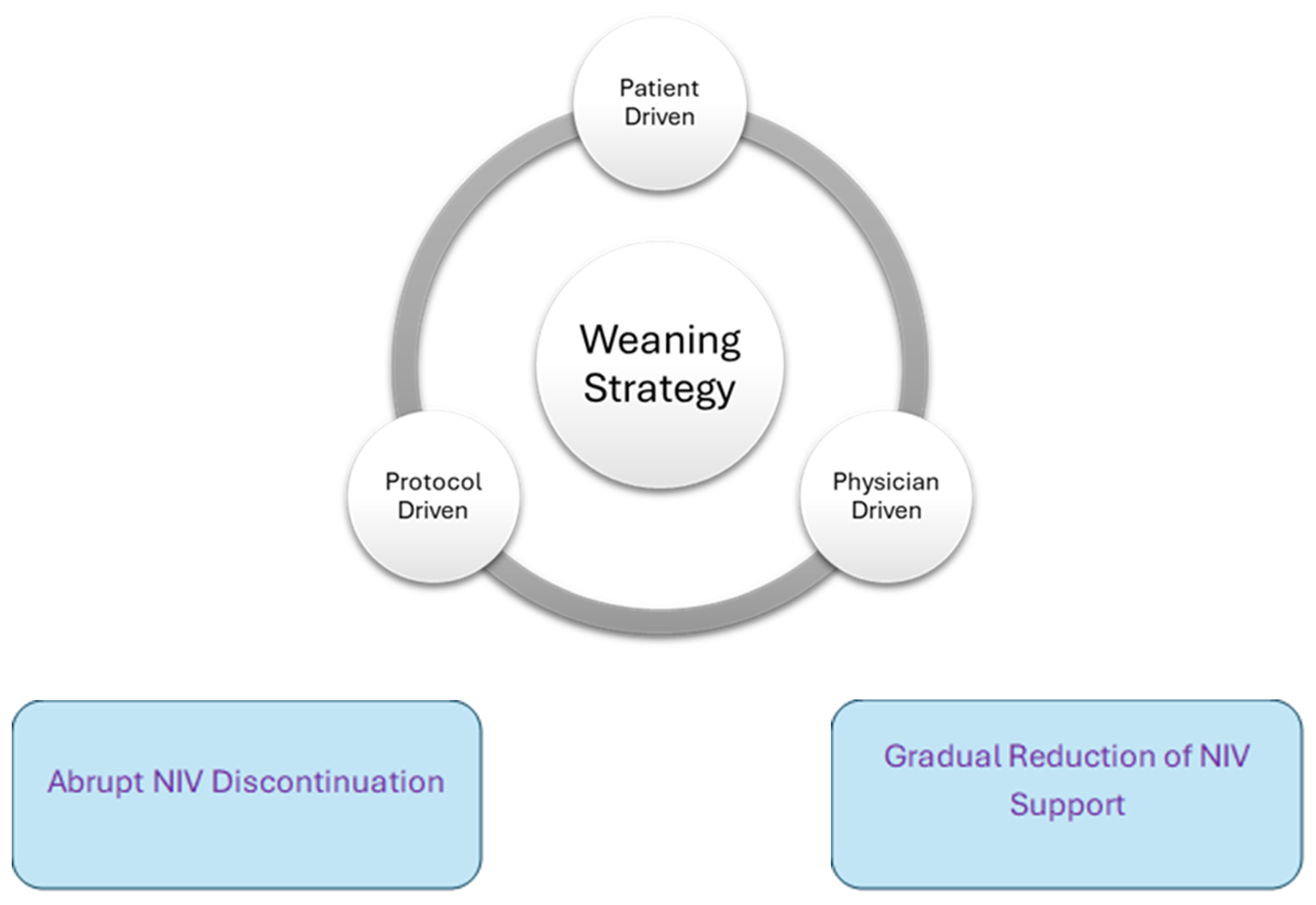Have you ever wondered how breathing support can be given without tubes or surgery? Non invasive ventilation might be the answer you’ve been curious about.
It’s a method that helps people breathe easier using simple masks or mouthpieces, avoiding discomfort and risks linked to more invasive procedures. You’ll discover what non invasive ventilation really means, how it works, and why it could be important for you or someone you care about.
Keep reading to unlock the facts that can make a difference in understanding this gentle but powerful breathing aid.

Credit: www.mdpi.com
Basics Of Non Invasive Ventilation
Understanding the basics of non invasive ventilation (NIV) is essential if you or someone close to you faces breathing challenges. NIV offers a way to assist breathing without the need for invasive procedures like intubation. By grasping how it works and the types available, you can feel more confident about its role in respiratory care.
Definition And Purpose
Non invasive ventilation means helping a person breathe using a mask or similar device, rather than inserting tubes into the airway. Its main purpose is to support breathing when your lungs or muscles are too weak or tired. This approach reduces the risk of infections and complications that come with invasive methods.
Have you ever wondered why some patients avoid ventilators yet still get breathing help? NIV is the answer, providing a gentler way to improve oxygen levels and reduce carbon dioxide in the blood.
Types Of Non Invasive Ventilation
NIV comes in a few common forms, each suited to different needs:
- Continuous Positive Airway Pressure (CPAP): Delivers steady air pressure to keep airways open, often used for sleep apnea.
- Bilevel Positive Airway Pressure (BiPAP): Provides two levels of pressure—higher during inhalation and lower during exhalation—helping with more severe breathing difficulties.
- High-Flow Nasal Cannula (HFNC): Supplies heated and humidified oxygen at high flow rates through nasal tubes, easing breathing effort.
Choosing the right type depends on your specific condition and how much support your lungs need. Knowing these options helps you discuss treatment choices with your healthcare provider more effectively.
How It Works
Non invasive ventilation uses a mask that fits over your nose, mouth, or both, creating a seal that allows air pressure to be delivered into your lungs. This pressure helps keep your airways open and assists your breathing muscles.
The machine adjusts air flow based on your breathing pattern, making it easier to inhale and exhale without strain. Imagine the relief when your body doesn’t have to work as hard to get oxygen—this can improve your energy and overall well-being quickly.
Have you noticed how simple changes in your breathing environment can make a big difference? NIV taps into that principle by supporting your lungs gently but effectively.

Credit: www.mdpi.com
Common Uses And Benefits
Non invasive ventilation (NIV) offers a way to support breathing without the need for surgical procedures or tubes inserted into the airway. Understanding its common uses and benefits can help you see why it is often the preferred choice in many medical situations. Let’s look at how NIV helps treat specific conditions, why it’s often better than invasive methods, and how it focuses on your comfort and safety.
Conditions Treated
NIV is commonly used to manage breathing problems caused by several conditions. These include:
- Chronic obstructive pulmonary disease (COPD) flare-ups
- Acute respiratory failure
- Sleep apnea
- Congestive heart failure with pulmonary edema
- Neuromuscular diseases affecting breathing muscles
By supporting your breathing in these cases, NIV can prevent the need for more invasive procedures. Have you ever wondered how breathing support without a tube can make such a big difference?
Advantages Over Invasive Methods
One major benefit of NIV is that it avoids the risks linked to invasive ventilation, such as infections and damage to the airway. Because it uses masks or nasal devices, there’s no need for intubation. This reduces complications and often leads to quicker recovery times.
In addition, NIV can be started and stopped more easily, allowing healthcare providers to adjust support based on your current condition. How would you feel knowing that your breathing support can be less intrusive but still highly effective?
Patient Comfort And Safety
Many patients find NIV more comfortable since it eliminates the discomfort of a breathing tube down the throat. The masks come in different sizes and types to fit you better, which helps reduce skin irritation and pressure sores.
Safety is also a key focus. NIV allows you to speak, eat, and cough more naturally, which supports better lung hygiene. Have you noticed how being able to communicate and eat normally can improve your overall experience during treatment?
Equipment And Setup
Understanding the equipment and setup of non-invasive ventilation (NIV) is crucial for anyone who uses or manages this therapy. The right setup ensures comfort, effectiveness, and safety. Let’s break down the key components that make NIV work smoothly.
Types Of Masks And Interfaces
The mask is your main connection to the NIV machine. It must fit well to avoid leaks and discomfort. There are several types to choose from:
- Nasal Masks:Cover only the nose, allowing easier communication and eating.
- Full-Face Masks:Cover both nose and mouth, ideal if you breathe through your mouth.
- Nasal Pillows:Fit directly into the nostrils, offering minimal contact and good for mild cases.
- Oronasal Masks:Similar to full-face but designed for a tighter seal.
Choosing the right mask can change how comfortable your therapy feels. Have you ever tried a mask that just wouldn’t sit right? That’s why many users try several before settling on the best fit.
Machine Components
The NIV machine is more than just a box that blows air. It has several parts working together:
- Blower:Generates the airflow you need for breathing support.
- Humidifier:Adds moisture to the air to prevent dryness in your airways.
- Filters:Clean the air before it reaches you, keeping out dust and allergens.
- Tubing:Connects the machine to your mask, delivering air efficiently.
Each part plays a role in making your breathing easier. Imagine trying to breathe dry, unfiltered air for hours—comfort would quickly drop. Proper maintenance of these components can save you from discomfort and potential infections.
Settings And Adjustments
The machine’s settings control how much air you get and when. These adjustments are key to matching your personal breathing needs. Common settings include:
- Inspiratory Pressure:The air pressure delivered when you breathe in.
- Expiratory Pressure:The pressure during exhalation, helping keep airways open.
- Backup Rate:A safety feature that provides breaths if you don’t breathe enough on your own.
Working with your healthcare provider to fine-tune these settings can make a big difference. Have you noticed how small changes in comfort can impact your willingness to use NIV every night? Getting this right is worth the effort.
Who Can Use Non Invasive Ventilation
Non Invasive Ventilation (NIV) helps many people breathe better without tubes inside the throat. It uses masks or similar devices to support breathing. Not everyone can use NIV. Doctors decide who benefits most based on health and other factors.
Patient Selection Criteria
Doctors select patients carefully for NIV. It suits those with breathing problems but who can still protect their airway. Common conditions include:
- Chronic obstructive pulmonary disease (COPD)
- Sleep apnea
- Heart failure with fluid in the lungs
- Acute respiratory failure in some cases
Patients must be alert and able to use the mask well. They need to cooperate and breathe spontaneously.
Contraindications
Some patients should not use NIV. Reasons include:
- Severe facial injuries or burns
- Excessive secretions or vomiting risk
- Unconsciousness or inability to protect the airway
- Severe low blood pressure or shock
- Recent surgery on the face or upper airway
These conditions increase risks and reduce NIV effectiveness.
Monitoring And Follow-up
NIV users need close monitoring. Health workers check breathing, oxygen levels, and comfort. Masks must fit well to avoid leaks.
Follow-up visits ensure the treatment works. Adjustments to pressure or mask type may be needed. Regular checks prevent complications and improve results.
Challenges And Limitations
Non-invasive ventilation (NIV) offers significant advantages. Yet, it presents certain challenges and limitations. Understanding these aspects is crucial for effective use. The method requires careful monitoring and skilled application. Let’s explore the common side effects, potential complications, and when alternatives might be necessary.
Common Side Effects
NIV can cause discomfort. Patients may feel claustrophobic wearing masks. Skin irritation is another issue. Masks can rub against the skin. This leads to redness or sores. Dryness in the mouth or nose can occur. Some people experience nasal congestion. These side effects are usually manageable. Proper mask fitting helps reduce discomfort.
Potential Complications
Serious complications are rare. But they do occur. Air leaks can happen around the mask. This reduces treatment effectiveness. Stomach bloating is possible. It’s caused by air entering the stomach. In some cases, patients might aspirate. This means inhaling stomach contents. Regular monitoring minimizes risks. Professionals need to be vigilant.
When To Consider Alternatives
Sometimes, NIV might not be the best option. Patients with severe anxiety might struggle. Those with facial injuries face challenges. Conditions like excessive secretions can complicate use. If NIV fails to improve breathing, alternatives are needed. Invasive ventilation becomes a consideration. Discuss options with a healthcare provider. They provide guidance tailored to individual needs.

Credit: www.biosysmed.com
Future Trends In Non Invasive Ventilation
The future of non invasive ventilation (NIV) holds exciting possibilities that could transform patient care and comfort. As technology evolves, NIV devices are becoming smarter, more adaptable, and easier to use. Understanding these trends can help you stay informed about how NIV might fit into your or your loved ones’ treatment plans.
Technological Advances
New NIV machines are integrating artificial intelligence to adjust settings in real time based on your breathing patterns. This means you get the right level of support without constantly tweaking the device yourself.
Wireless connectivity is also becoming common, allowing healthcare providers to monitor your ventilation remotely and intervene if needed. Imagine not needing frequent hospital visits because your care team can track your progress from afar.
Improved Patient Interfaces
The design of masks and mouthpieces is improving to enhance comfort and reduce skin irritation. Soft, flexible materials and customizable fittings help you wear NIV gear longer without discomfort.
Some new interfaces even include sensors to detect leaks or improper positioning, alerting you to make quick adjustments. This reduces frustration and improves the effectiveness of your therapy.
Expanding Clinical Applications
NIV is moving beyond traditional uses like sleep apnea and chronic obstructive pulmonary disease (COPD). Researchers are testing its benefits for heart failure, neuromuscular disorders, and even COVID-19 recovery.
Could NIV become a frontline tool in more conditions you or your family might face? Keeping an eye on these developments could give you more treatment options in the future.
Frequently Asked Questions
What Does Non Invasive Ventilation Mean?
Non invasive ventilation (NIV) means providing breathing support without intubation. It uses masks or nasal devices to help patients breathe.
How Does Non Invasive Ventilation Work?
NIV delivers pressurized air through a mask. This keeps airways open and improves oxygen delivery to the lungs.
Who Needs Non Invasive Ventilation Treatment?
Patients with respiratory failure, COPD, or sleep apnea often need NIV. It helps them breathe better without invasive procedures.
What Are The Benefits Of Non Invasive Ventilation?
NIV reduces the need for intubation, lowers infection risk, and improves breathing comfort. It supports recovery with fewer complications.
Conclusion
Non-invasive ventilation helps many people breathe better without surgery. It uses a mask or similar device to support breathing. This method is safer and easier than invasive options. It can improve comfort and reduce hospital stays. Understanding its use helps patients and caregivers make informed choices.
Always talk to a doctor about the best breathing support. Non-invasive ventilation remains a key tool in respiratory care today.





